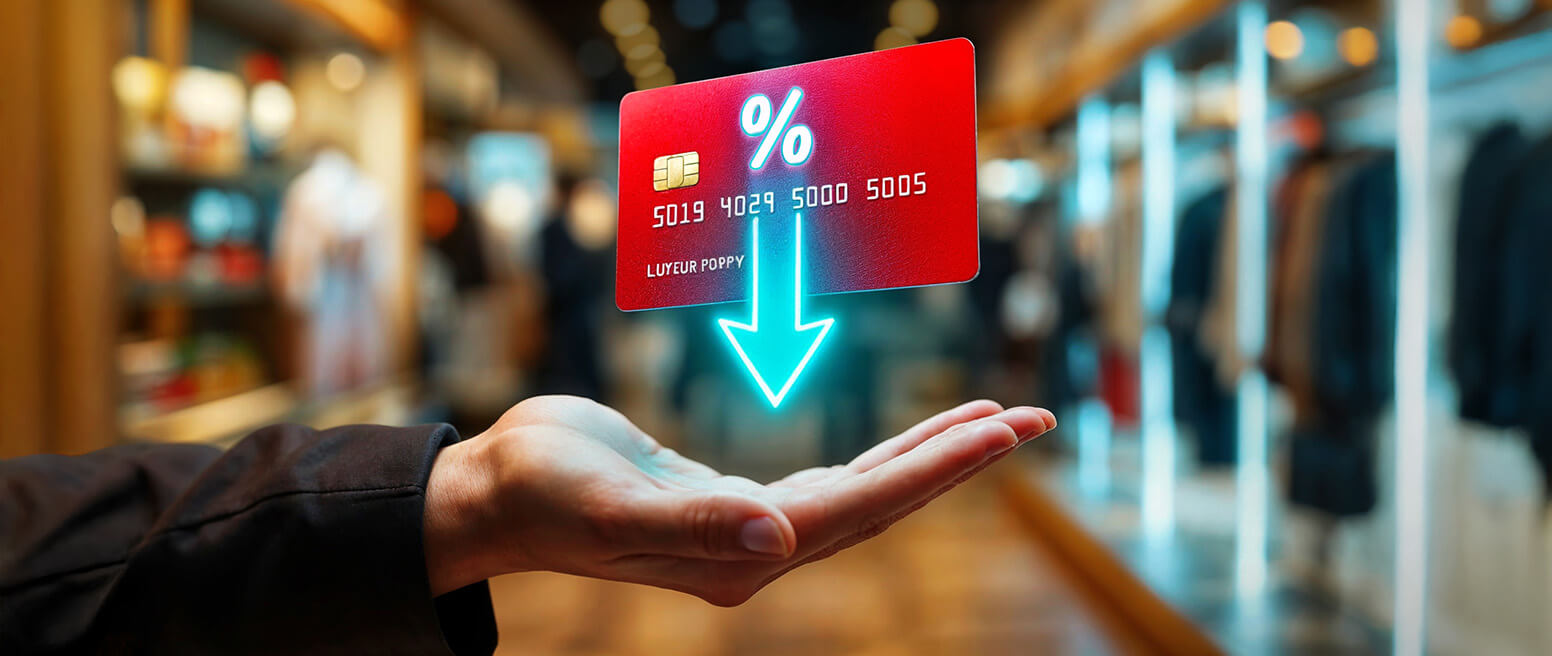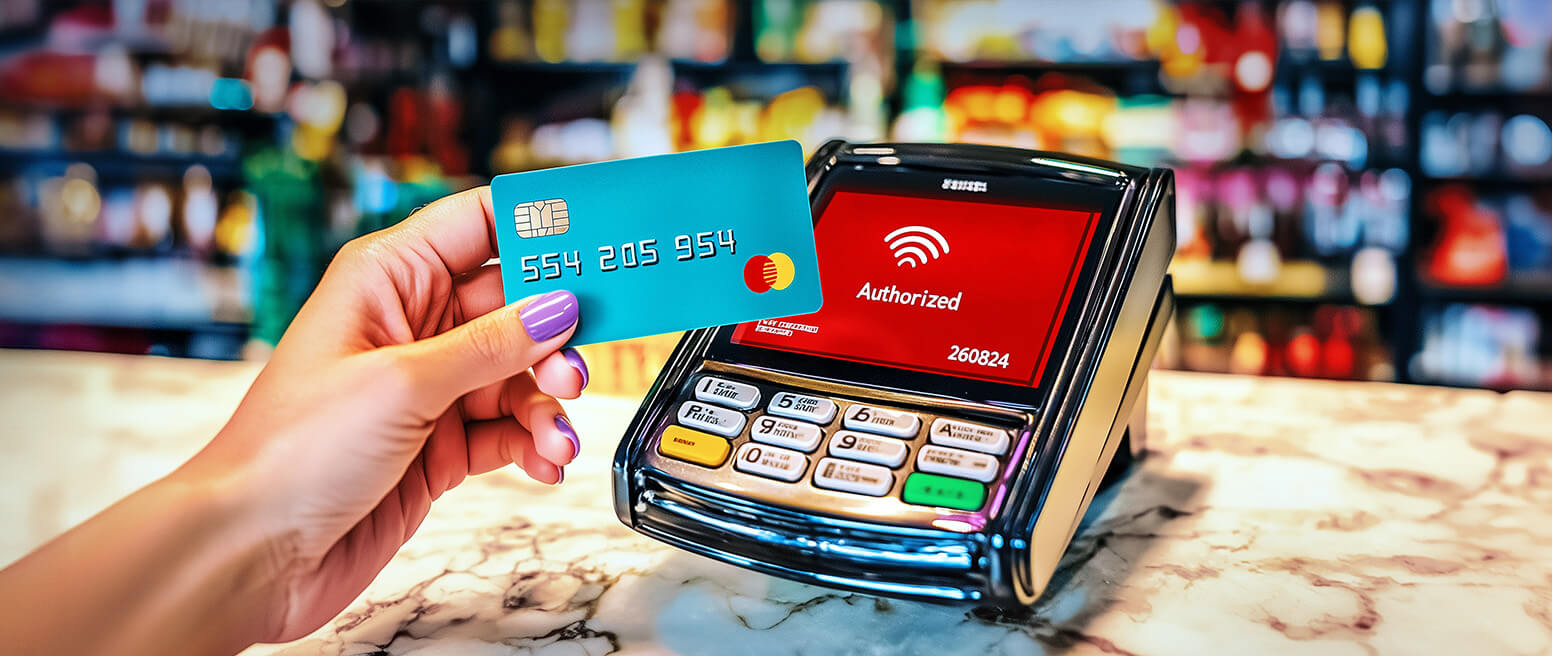What Triggers a Credit Card Decline Code? What Do You Do About Them?
Picture this: you’re at the store with a cart full of items. You head for the checkout line, but when you dip your card into the terminal to pay, the charge is declined.
It’s happened to everyone at least once. Still, it can be humiliating if you’re a cardholder. What you may not really consider, though, is that getting credit card decline codes is even less fun if you’re the merchant.
As a merchant, a declined card means losing out on a sale that was already in the bag. It’s a real bummer. So, why do banks even decline customers’ cards in the first place? What are some of the potential reasons, and what can you do to recover the sale in question?
Let’s find out.
What are Credit Card Decline Codes?
- Credit Card Decline Code
A credit card decline code is a negative message issued in response to a request for authorization during a transaction. This occurs when a payment can’t be processed for a specific reason; it may be declined by the processor or payment gateway, or by the customer’s issuing bank.
[noun]/*kredət • kard • də • klīn • kōd/
A transaction doesn’t automatically gain approval after the customer swipes a card or hits “submit.” Instead, your processor takes that transaction information and relays it to the issuing bank for approval. In most cases, the bank will provide authorization, clearing the way to finalize the sale. That said, the bank might also decline transactions that raise certain red flags.
When a card gets declined, most people assume it’s for one of two key reasons: fraud or insufficient funds. In reality, however, there are literally dozens of reasons why an institution might decline your customer’s card transaction. The bank will provide a two-digit credit card decline code as part of their response to explain why they didn’t authorize the sale.
Credit Card Decline Code Triggers
A lot of issues can arise and trigger a card decline code. Some common triggers include a lack of funds in the account, invalid card information being entered, or a lack of authorization.
The first thing you need to know is that not every transaction decline results from a lack of funds or criminal fraud.
Many declines can be triggered by system errors, merchant input errors, or simple communication errors between banks and processors. In other cases, the card itself could be the problem. After all, it’s just a piece of plastic that will eventually wear down over time.
All that being said, there are obviously some credit card decline code triggers that are more common than others. Here are some recurring issues that you might see pop up most often to cause decline codes:
- Credit card verification error: The card used could have a faulty microchip or magnetic stripe, which would require manual input.
- Expired Card: Some people hang on to cards longer than they should. As a result, they might not realize their card has expired.
- Insufficient funds: The cardholder doesn’t have the funds available in their bank account to cover the transaction.
- Transaction not permitted: The authorized cardholder has blocked certain online transactions, or has set a manual payment limit.
- Exceeded credit limit: The cardholder does not have enough of their existing credit limit available to make a purchase.
- Incorrect security code: The cardholder entered the wrong CVV number. This is usually a manual entry issue, but could be a sign of fraud.
- Invalid card number: Either the issuing bank can’t be recognized by the routing information provided, or the card number provided is not tied to a valid account.
- Invalid transaction: Often, this is because a card number was punched in incorrectly or the card was misread by the scanner.
These are just a few examples of the decline triggers you can expect as a merchant. To be frank, there are a lot of decline codes to sort through. They range from run of the mill errors all the way to fraudulent and outright stolen cards.
We’ll get to the full list of codes further down. If you want the truth, though: most of those codes are pretty obscure and rarely used.
There’s only a small handful of card decline codes you’ll typically run into in your day-to-day operations. With that in mind, let’s run down the ten most common decline codes and how you should respond to them.
Credit Card Decline Codes: A Complete List of Codes & How to Respond to Each
Quick preface: credit card decline codes are not fully standardized.
They can differ from one payment gateway to the next, so there may be some redundancies in the codes, or even occasional mismatches. For example, some gateways use code “00” to mean the payment has been approved, while others use the same code to mean “Issuer System Unavailable,” and then use code “11” to signify an approval.
The codes also tend to be rather vague, as this helps protect the cardholder’s privacy and avoid giving away sensitive information in the event of a genuine fraud attack.
With that out of the way, here’s the complete list of credit card decline codes, along with the meaning used by most payment gateways:
What it means: The issuing bank stopped the transaction.
What to do: Request the customer to use a different card or contact the issuing bank for more information.
What it means: The issuing bank has stopped the transaction for a special reason.
What to do: Ask the customer to use another card or contact the issuing bank for more information.
What it means: There’s a problem with the merchant’s account or the merchant ID.
What to do: Contact your payment processor or acquiring bank.
What it means: The issuing bank flagged or declined the transaction.
What to do: Ask the customer to contact their bank and find out the reason for the decline or to use a different card to complete the transaction.
What it means: The transaction has tripped the bank’s fraud detection mechanisms. As such, the transaction may be a case of fraud.
What to do: Call the bank and ask for further information.
What it means: The transaction was blocked by the issuer.
What to do: Contact the issuer to resolve the issue.
What it means: The issuer flagged the account as fraudulent and stopped the transaction.
What to do: For one-time transactions, avoid rerunning the card. For scheduled transactions, follow up with the customer and request that they contact their bank for more information.
What it means: The customer needs to further verify their identity before a transaction can be authenticated.
What to do: Ask the customer to provide the verification details required, then try again.
What it means: Part, but not all, of the transaction was approved.
What to do: Either cancel the payment or ask the customer to pay the remaining balance using another card.
What it means: The transaction is not accepted by the issuer.
What to do: Double check that you submitted the payment method correctly.
What it means: A mistake was made when keying in the dollar amount (e.g. negative number, invalid symbol, etc.)
What to do: Fix the dollar amount entered and submit the transaction again.
What it means: A mistake was made when typing the customer’s card number.
What to do: Re-enter the correct account number and submit the transaction again, or try another card.
What it means: The card number entered is wrong and does not correspond to any known card issuer.
What to do: Key in the correct card number and try again.
What it means: An unknown error occurred.
What to do: Retry the transaction. Contact the acquiring bank if the problem persists.
What it means: The transaction was declined by the issuer, but no reason was provided.
What to do: Ask the customer to contact their bank for clarification on the matter, or use another card.
What it means: The issuing bank cannot match the cardholder’s credit card details with an account in the issuer’s database.
What to do: Ask the cardholder to check their card details, then retry the transaction.
What it means: A temporary error occurred while a payment was being authorized.
What to do: Try submitting the payment again. If the problem persists, get in touch with your payment processor.
What it means: The card number presented is not associated with a credit card account.
What to do: Tell the customer to use a different payment method.
What it means: The card in question has been reported as lost by the cardholder. If in use, this is likely a case of fraud.
What to do: Pick up the card, and ask for a valid form of payment… but be careful. If the cardholder has just handed you a potentially fraudulent card, it might be wise to request either cash or a debit card to proceed with the transaction.
What it means: The cardholder has reported the credit card stolen. The issuer has denied the transaction and flagged the card for fraud.
What to do: Pick up the card. Do not accept any form of payment from the customer attempting to use the card except cash, and immediately report the transaction to the credit association.
What it means: There are not enough funds in the customer’s bank account to cover the cost of the transaction.
What to do: Ask the customer for an alternative form of payment.
What it means: A debit card transaction was declined because the card wasn’t linked to a checking account.
What to do: Ask the customer to pay using a different card
What it means: The transaction was declined because the card’s linked savings account does not exist.
What to do: Ask the customer to pay using a different card.
What it means: The card in question is expired, and therefore no longer acceptable.
What to do: Your customer must provide a card with a valid date. So, either ask for a valid card or reject the sale.
What it means: The customer entered the wrong PIN.
What to do: Ask the customer to re-enter their PIN.
What it means: The card-issuing bank blocked the transaction.
What to do: Tell the customer to call their issuing bank and ask that the transaction be allowed. Then, try submitting the payment again.
What it means: The merchant payment terminal isn’t configured correctly.
What to do: Contact your payment processor and ensure your terminal is properly set up for the type of payment in question.
What it means: The issuer has blocked the transaction because it appears to be fraudulent.
What to do: Ask the customer to call their issuing bank to verify their identity.
What it means: The cardholder has exceeded the withdrawal limit with their issuing bank, meaning they have overdrawn their funds or spent over their available withdrawal limit for that day.
What to do: Ask the customer to try another credit or debit card, or have them call their bank to inquire if the limit can be extended.
What it means: A customer tried to make a purchase with a card that isn’t supported for the transaction in question.
What to do: Ask the customer to pay using a different payment method.
What it means: The merchant or customer entered the card verification value, or CVV, incorrectly.
What to do: Try keying in the CVV again. If the problem persists, you can try processing the transaction without including the CVV. But, be aware this will increase the fraud risk associated with the purchase.
What it means: The transaction was flagged because it raised red flags for potential money laundering.
What to do: Ask the customer to contact their bank or use a different card.
What it means: The cardholder has either exceeded their available credit limit, or the transaction would push them over that limit.
What to do: Ask the customer to try another credit card, or use their network and banking APSP to pay down their balance before trying the transaction again.
What it means: The cardholder has entered the wrong PIN more than three times.
What to do: Request that the customer use a different card.
What it means: A request to reverse a transaction has been received, but there are no records of the transaction to be reversed.
What to do: Confirm the transaction details entered and retry the transaction.
What it means: The issuer has blocked a transaction because the card is being used for the first time.
What to do: Ask the customer to call the bank to verify their identity, or ask for a different payment method.
What it means: Funds used in a transaction were already returned to the original payment method.
What to do: Ask the customer to try using another payment method, or try updating the payment terminal tor refresh the data.
What it means: The transaction was reversed because the original payment method was declined.
What to do: Ask the cardholder to use another payment method.
What it means: The issuer or payment network’s security systems could not decrypt the PIN used in the transaction.
What to do: Ask the cardholder to try again, or to use a different payment method (e.g. a crest card) that does not require a PIN.
What it means: The cardholder entered the wrong CAM, DCVV, ICVV or CVV.
What to do: Retry the transaction after the cardholder identifies the correct security values.
What it means: The transaction didn’t go through, but there wasn’t an identifiable problem.
What to do: Try processing the transaction again and contact your bank if the problem persists.
What it means: The cardholder’s PIN could not be verified, possibly because it was entered incorrectly.
What to do: Tell the cardholder to enter their PIN again. If the issue persists, ask them to try another payment method.
What it means: The cardholder’s account information could not be accessed.
What to do: Ask the cardholder to try again using the same payment method. If the problem persists, use a different card.
What it means: The payment couldn’t be processed because the issuing bank experienced a technical glitch.
What to do: Initiate a transaction again. Contact your bank if the decline code persists.
What it means: A customer’s account has been flagged.
What to do: Ask the customer to call their bank.
What it means: The transaction was blocked because it was already processed.
What to do: Nothing. Do not reattempt transaction.
What it means: There’s a technical problem with the issuing bank.
What to do: Wait for a while, then try submitting the transaction again.
What it means: The issuer declined to authorize the debit card transaction because of the surcharge fees imposed by the merchant.
What to do: Waive the surcharge fees, or ask the cardholder to pay using another payment method, like a credit card.
What it means: A card network stands in on behalf of the issuing bank and declines the transaction.
What to do: Try again, or wait for the issuing bank’s authorization systems to come back online.
What it means: The issuer blocked the transaction because the card involved is ineligible for cash or cashback.
What to do: Ask the customer to use another card, or to proceed without receiving cash back.
What it means: The request exceeds the issuing bank or card’s credit limit.
What to do: Ask the cardholder to try again with a different payment method.
What it means: The issuer has blocked the transaction, and the payment method cannot be used again for some time.
What to do: Ask the customer to use a different payment method, preferably one that is issued by another bank.
What it means: The transaction was blocked because card verification values (CVV2) were entered incorrectly.
What to do: Prompt the customer to enter the correct CVV2 details.
What it means: The transaction was blocked because the amount is greater than the value of the authorization hold.
What to do: Perform an authorization reversal, then try again. This time, make sure the transaction is equivalent to the amount of the authorization hold.
What it means: The transaction was blocked because the card could not be successfully authenticated.
What to do: Ask the cardholder to try again or use a different card.
What it means: Cardholder has requested to stop the recurring payment you’re trying to process.
What to do: Cancel all future payments related to that card number to avoid chargebacks and their resulting fees. If the cardholder has breached your agreement in any way, contact them directly to resolve the issue.

As we can see, it’s not uncommon for different parties to issue credit card decline codes that aren’t necessarily indicative of fraud or a lack of funds.
With these otherwise-valid transactions, you have a cardholder blocked from completing a purchase. This can immediately turn buyers away, driving them to your competitors. So, there’s a clear incentive to try and remove roadblocks that could prevent an authorization, or which might lead to an authorization reversal.
What is a Soft Decline?
A “soft” decline is like a temporary decline. It could result from a momentary problem, like a connection disruption during the transaction. If a merchant gets a soft decline response, they can usually retry the transaction once the issue is fixed.
A soft decline occurs when the issuing bank connected to a transaction approves the payment, but there’s a problem at some other point in the process. For instance, if a payment gateway is down at the time a customer submits a transaction, it could cause a soft decline.
Your payment gateway will let you choose to block, flag, or accept soft declines. Thus, you have some influence over the credit card decline codes you receive that are attached to a soft decline.
The key to balancing due diligence and accessibility is to be reasonably sure that a transaction is valid, which means implementing a multilayer strategy to manage fraud. For instance, your strategy should include:
- Address Verification Service (AVS)
- CVV verification
- Velocity checks
- Geolocation
- 3-D Secure 2.0 technology
The tools listed above gauge different potential fraud indicators with little-to-no impact on customer-facing friction. When combined with fraud scoring and manual reviews of transactions, these tools offer a much more detailed and dynamic picture of the individual submitting a transaction.
What is a Hard Decline?
A “hard” decline can be caused by issues like a lack of funds or suspicion of fraud. If a merchant gets a hard decline response, they should not reattempt the transaction using the same card.
Unlike its counterpart, a hard decline takes control completely out of your hands. A hard decline occurs when the bank does not approve the transaction.
The only way to resolve one of these is to try addressing the issue that caused the transaction to be declined in the first place. This means interpreting the credit card decline code and developing a solution.
Here’s an example: Let’s say a charge from a loyal subscription customer may be declined because the customer has insufficient funds at that moment. One way to address this is to implement automatic retries. This means waiting a few days and reattempting to charge the card. Most merchant processors allow you to implement this practice. You can also try offering alternate payment options like PayPal or Apple Pay. This is an easy way to recover sales.
For other hard credit card decline codes (expired payment card, invalid card number, etc.), it could be helpful to reach out to the customer via email. Inform the buyer of the problem, and offer suggestions for ways to resolve the issue and recover the sale.
What if the Sale Can’t Be Recovered?
There are certain credit card decline codes from which you can’t recover a sale. The approach to take in these cases is to do your best to retain customers and entice them to make future purchases. This is where it really pays to develop a personal relationship with buyers.
Like we mentioned at the top of the post, it can be embarrassing for a legitimate buyer if their card gets declined. One way to reassure them and keep their loyalty is with a personalized response. This goes beyond a basic form template. You need to reach out and forge a personal connection with your buyer. Your email should:
Apologize for the inconvenience (even if it’s not your fault).
Explain in simple, basic language why the transaction may have been declined.
Offer help with resolving the issue and continuing the transaction.
Optional: Provide an incentive, like a small discount, to help recover the sale.
With this approach, you convey to the customer that you genuinely care about them, and that you understand their problem and their pain point. Not only that, you also give them a great incentive to retry the purchase, and to continue shopping in the future.
How Can Merchants Reduce Credit Card Decline Rates?
Merchants aren’t always at fault for credit card declines, and so some declined transactions here and there are out of your hands. Still, each failed transaction means unrecoverable sales, a damaged merchant reputation, and sullied customer relationships.
You should be super-proactive about preventing the subset of credit card declines that are within your control. You can do so by:
You can provide more frictionless checkout experiences to customers by working with issuers behind the scenes. Collaboration and communication makes it more likely that large, unusual, or one-off transactions go through.
Proactively communicating with cardholders can also help. For example, if you conduct a lot of recurring charges, you’ll encounter some expired or canceled cards sooner or later. Asking customers to update their payment information before this occurs may result in a more seamless purchasing experience, and reduce the incidence rate of failed transactions.
You can take that previous tip a step further. Instead of manually calling cardholders when payment details change, you can use technology to automate this task.
Issuing banks and payment networks like Mastercard and Visa have services that automatically update important card credentials. Merchants who use a credit card account updating service, like Visa Account Updater, can get real-time access to detailed and continuously updated card information, all without having to reach out to cardholders themselves.
You should be particularly strict about preventing card declines that may arise as a result of errors on your part.
Decline codes 03 (invalid merchant), 13 (invalid amount), and 58 (transaction not permitted – terminal), for instance, often occur due to terminal configuration or clerical errors. To prevent these unnecessary credit card declines, make sure that your terminals are functioning properly and that your point-of-sale stations are staffed by competent and well-trained personnel.
Merchants who support a variety of payment options can enable customers to complete transactions when one method fails.
Beyond credit cards, you can accept digital wallets, cash, debit cards, gift cards, and other payment options. Doing so gives customers the power of choice in case one payment method gets rejected, and thereby increases the likelihood of a successful transaction.
Additionally, there are third-party services like Gravy, which are aimed at helping you recover declined transactions. But, even with help from a third party, the core issue — the difficulty of parsing credit card decline codes — remains.
How you manage this process will impact other areas of operations, too. That’s why it’s worth giving your rejected purchases a second look.
FAQs
What is a decline code on a credit card?
A credit card decline code is a two-digit alphanumeric string that indicates why a transaction was processed unsuccessfully. Decline codes can signal issues with a merchant’s payment terminal, the card network, or the cardholder’s issuing bank.
What are the error codes for card transactions?
There are dozens of different error or decline codes. Each decline code specifies why a transaction was declined. For example, common errors include 01 (Refer to issuer), 03 (Invalid merchant), 05 (Do not honor), 13 (Invalid amount), and 55 (Invalid PIN).
What are card issuer decline codes?
Card issuer decline codes are two-digit alphanumeric codes (e.g. 01, 02, 65, 1A, etc.) that appear when an issuing bank, payment network, or merchant payment terminal declines a card transaction. Each decline code is associated with a reason for the failed transaction, and can help merchants and cardholders know what steps to take to resolve the issue.
What is the decline code for transaction not allowed?
The decline code for transaction now allowed is decline code 57 (Transaction not permitted – Card). This decline code appears when the card issuer blocks the transaction because of restrictions associated with the payment card.
What is the decline code for insufficient funds?
The decline code for insufficient funds is 51. This decline code appears when the cardholder’s payment method lacks the funds to cover the transaction.
What is the invalid account decline code?
Decline code 14 (Invalid card number) may appear in the case of an invalid account. Other possibilities include decline code 15 (No such issuer) or decline code 25 (Unable to locate record in file).















